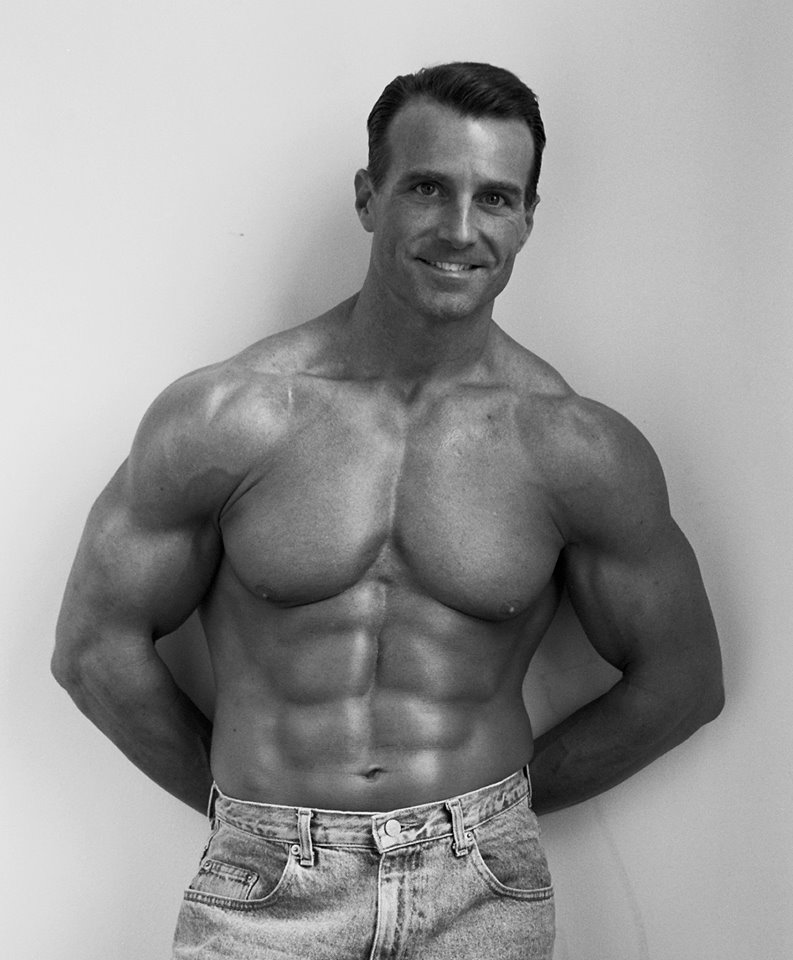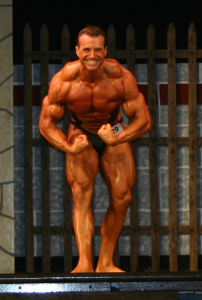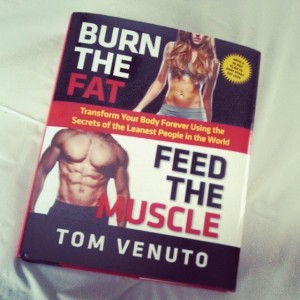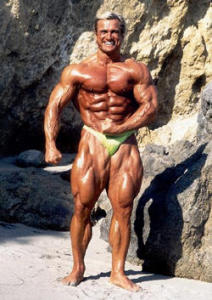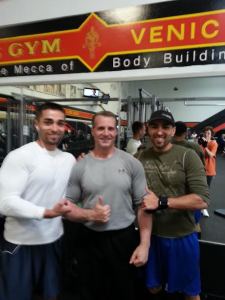Train Loco Nation! How we doing? Today we have an awesome interview with Tom Venuto. We really have a ton of respect for Tom as we’ve been following his work the past 3 years. We even had the great pleasure of picking his brain over a preworkout meal before hitting the MECCA in Venice Beach a few months back. We highly recommend following Tom’s work as he has a non-BS, evidence based, and practical approach when it comes to fitness. So without further ado, lets get to know the awesome Tom Venuto!
– Chris and Eric
_________________________________________________________________________________________________________
DDT: Could you give us a little background info on who Tom Venuto is?
Tom: I’ve been a fitness professional over 25 years. For the first 15 years, I worked as a one on one personal trainer, I managed health clubs, I worked for Gold’s Gym and Powerhouse Gym in New Jersey, and I competed in natural bodybuilding 28 times. When fitness on the web took off, I left the bricks and mortar gym business and so for the last 10 years I’ve been a full-time writer, online publisher, blogger and body transformation coach.
I’ve written for Muscle and Fitness, Men’s Fitness and IRONMAN magazine, for websites like Bodybuilding.com and too many others to list, and I’ve written two books on fat loss. I’m known best for Burn the Fat, Feed the Muscle, which was a best seller as an e-book since 2003. Just this past year, it was published for the first time in a new, completely updated print edition and on audiobook with Random House in the USA, UK and Canada.
I’m also the founder of Burn the Fat Inner Circle, which is an online fitness support community with thousands of members in 150 countries. I create the exclusive content, coach people on our private forums and host Burn the Fat body transformation contests several times a year. We have thousands of members in 150 countries.
DDT: What got you started or inspired to get into the (Healthy, Fit, Athletic, Bodybuilding) Lifestyle?
Tom: I saw Arnold Schwarzenegger in the movie Conan the Barbarian when I was 14, and I knew right then I wanted to be a bodybuilder. I read Arnold’s autobiography, The Education of a Bodybuilder, and that inspired me to start lifting weights in the garage. I trained through high school, started working out in gyms and put on 25 pounds of muscle, but when I got to college, I fell into drinking beer and eating junk food every night and I gained 20 pounds of fat. You could say I was “bulked up.” My roommates nicknamed me “Bob’s Big Boy.” I laughed about it, but honestly, I was embarrassed and felt like a hypocrite, because I was at the university studying exercise science and I had a beer gut. I had one foot in the college party lifestyle, but fortunately, my other foot was still in the gym.
One day I saw these guys who were prepping for a bodybuilding contest. They were ripped, and I said to myself, “How did they get so lean?” So I walked right up and asked them, and they told me about the bodybuilding contest diet. I followed their advice, and I lost the beer gut. I kept going, and within months, I got ripped too and I took 2nd place in my first competition the Natural Lehigh Valley. A month later I won my weight class at the Natural New Jersey. Five months later I won the overall at the Natural Pennsylvania. The next thing you know, everyone was asking me how I did it, and I started training and coaching people. That’s how I got into the fitness business.
I feel lucky that I stumbled into the right crowd right when I was young. The guys in the gym who originally influenced me and became my friends were natural bodybuilders. Natural means no steroids or any other banned or illegal drugs. When I was a teenager reading the muscle magazines, the pro bodybuilders almost never talked about the extra boost they were getting from pharmaceuticals. I later learned the extent of the lying, denying and covering-up going on by drug-using athletes. It was a big letdown at first when I learned the truth about the drug culture, and I found out that bodybuilding wasn’t always as healthy as it appeared. Natural bodybuilding is the healthy side of the sport.
What inspired me to continue competing and living the bodybuilding lifestyle was knowing that there was a community of natural athletes who pursue the sport with integrity, finding healthy role models who were building great physiques naturally, and aspiring to be that kind of role model myself.
DDT: You have a popular blog, Burn the Fat Blog – can you tell our readers a little bit about what inspired you to start it and what it consists of?
Tom: Burn the Fat Blog launched in 2004 and it’s my main home page for everything Tom Venuto related. My Burn the Fat Inner Circle is a private site for members only, so I started the Burn the Fat blog to have another website that was free to the public. The mission of my blog is to help people get leaner, stronger, fitter and healthier and to be a voice of sanity in such a crazy industry, filled with misinformation.
Burn the Fat Blog has a ton of info about burning fat, as the name implies, but I write on a variety of topics including strength training, muscle building, cardio training and motivation. I also do book and product reviews, interviews and feature some great guest bloggers, including a couple of guys who happen to be named Chris and Eric.
DDT: In your new book, “Burn the Fat, Feed the Muscle,” you talk about why diets fail and why people won’t fail on yours, what’s different about yours?
Tom: Burn the Fat, Feed the Muscle is about the secrets of the leanest people in the world – people like bodybuilders and fitness models. But it’s not about becoming a bodybuilder, unless you want to, it’s about how regular people can use the nutrition, training and motivation techniques from bodybuilding and physique sports to reach their own goals.
Burn the Fat, Feed the Muscle is also different because most books in this category are “weight loss programs” and they sell with claims like, “Lose 10 pounds in 10 days” and so on. The entire weight loss industry is using the wrong metric. The right metric is body composition, which is not what you weigh, but what your weight consists of – muscle or fat. Every good physique athlete already knows about body composition, but the mainstream is still out of touch with this idea of transforming your body instead of just losing weight. Teaching this concept to the public is what my book is all about.
Another thing that’s unique about Burn the Fat, Feed the Muscle, and this answers your question about what really makes it “fail proof,” is that Burn the Fat, Feed the Muscle is a system in the truest sense of the word. I don’t teach nutrition, weight training, cardio training and psychology and stop there, I give you a feedback loop system. This is where you set goals, you create a plan, follow the plan, measure your progress and then you adjust your strategy – in real time – according to your results.
When you hire a good coach and check-in with them every week, that’s ideal, because not only do you have access to an expert, you also have another layer of accountability. But with the information in the Burn the Fat, Feed the Muscle book, you can literally “coach yourself” all the way to peak condition, once you know how the feedback system works and you develop your sensory faculties. The system is built right into the program (and there’s an entire chapter devoted to it). As long as you keep using this system of adjusting your next input (strategy) based on your last output (result), it’s impossible to fail.
DDT: What’s your opinion on IIFYM/Flexible dieting approach? Is it optimal for optimizing body composition?
Tom: I wouldn’t agree with If It Fits Your Macros (IIFYM) if someone promoted it or interpreted it as an excuse or license to eat most of their calories from junk food. But I agree with the IIFYM approach in so far as I believe calculating calorie and macronutrient needs and having those targets as daily eating goals is the optimal approach. Anyone stuck at a fat loss plateau would be crazy not to track their nutrition numbers, and I think everyone should log in their food intake for an extended period of time at least once in their life for the learning experience alone. I know people who can guesstimate portion sizes and still get results without crunching numbers, and almost anyone can get more skilled at “intuitive eating” with enough experience. But creating meal plans by the numbers or tracking intake every day removes the guesswork and turns it into a science.
I also believe it’s ideal to allow flexibility in food choices and build meal schedules based on personal preferences. Diets that are too restrictive, no matter how well-intentioned, often end up backfiring. The pressure of feeling deprived and missing your favorite foods usually builds up and explodes in a binge. When you give yourself permission to relax and build your favorite foods into your plan, it becomes more enjoyable and also easier to follow. In that sense, “cheating on your diet” makes it work better (although it’s not really cheating if it’s a part of your plan).
In both the commercial weight loss diet and the contest prep worlds, a lot of people believe that you’re not allowed to deviate from a predefined list of foods like egg whites, fish, chicken, oats, brown rice, yams, potatoes, vegetables and so on (commonly known as “clean foods”), and if it’s a low carb diet, it’s restricted even more to allow only protein and fat). You’re warned about foods you should “never eat” and foods are viewed dichotomously as good or bad, fattening or not fattening. You’re told that if you go off the approved list of foods, you’ll compromise your results or stop fat loss completely.
The truth is, the IIFYM philosophy is right when it says that as long as you have a calorie deficit, you’ll lose weight no matter what foods you eat. And if you’re weight training and getting your macronutrient numbers right, especially protein, then the composition of the weight you lose will be favorable to keeping the muscle while burning the fat. I’m not recommending eating a lot of junk food. I simply recommend avoiding the forbidden food or all or nothing diet mentalities.
I believe that two things could be improved in the IIFYM/flexible dieting field: One, more acknowledgement that weight loss and health are separate outcomes, and eating for health should be a priority even if your goal is cosmetic. And two, more discussion about exactly how much nutrient-dense, unprocessed food we should eat to optimize long-term health. We should be talking about food quantity and food quality, but I don’t know many coaches who put recommendation numbers on them both.
The way I’ve done it for years is, in addition to tracking calories and macros, I use a food quality compliance rule. Usually I suggest 90%, though even this number can be flexible within reason. If you choose an 80% or 90% compliance rule, then 10% to 20% of your meals or calories can come from pizza, chocolate, pop tarts, ice cream, chips, pancakes – whatever you want. As long as you hit your macro and calorie quantity goals, and the majority of your calories come from quality food, you can rest assured there won’t be any decrement in your results – body composition or health.
DDT: From a training perspective, do you feel rep schemes should be manipulated for long term hypertrophy? What rep schemes do you prescribe to your clients?
Tom: The medium rep range – which is generally described as 8 – 12 – has traditionally been considered ideal for hypertrophy. That’s probably more or less true and a solid prescription if a bodybuilder had to pick one rep range and if you’re thinking about the practical considerations as well as the physiology behind it. However, we don’t have to use only one rep range and recent research has suggested that as long as you match workouts for volume, lower rep sets (4 – 6 reps) may be able to stimulate hypertrophy just as well (while being superior for absolute strength gains). Therefore, it’s probably a good idea to include medium rep sets and heavier, low rep sets.
I think that putting a little bit of high rep training (13-20+ reps) and pump work into the mix can also be beneficial for hypertrophy. There’s some science behind this notion too, based on what high reps do in the way of metabolic stress and increased blood flow in the muscle. A couple of anecdotal examples also come to mind: Ray Kroczaleski’s heavy high rep dumbbell rows (aka Kroc rows) and Tom Platz’s amazing feats of high rep squatting. Look at Kroc’s back and Platz’s legs in his prime and it’s hard to say there’s not something going on there.
I think including multiple rep ranges as part of a periodized training plan is one of the best strategies anyone with hypertrophy goals can use to build muscle while sparing yourself the beating your joints and CNS get from training heavy all the time. Personally, one of the most effective strategies I’ve ever used is an undulating-style of periodization where I go through all the rep ranges in any given week or at least every other week. There are strength days and hypertrophy days, with a little bit of high rep and pump work thrown in for good measure.
Fun Time!
DDT: What is your favorite lift and why?
Tom: I don’t really have a favorite lift, I like a lot of lifts. But if you forced me to pick one, I’d probably say high rep squats. I got turned on to high rep squats for a couple reasons: Aside from the fact that 20-rep breathing squats made my legs my best bodypart back in my contest days, the first reason is that I ruptured my L4 disc, and heavy squats (like 3-5 rep maxes) would always aggravate my lower back, but the high rep squats with less weight didn’t.
Another reason was because Tom Platz was another one of my bodybuilding idols when I was a teenager. I still have his leg training manual to this day. He was a big proponent of alternating heavier squats with lighter high rep squats in the 20-30 rep range and occasionally even more than 30 reps. It wasn’t actually light weight though – it was more like high reps with heavy weight, like 315 for 50, 405 for 30 and there is a video of Platz on you tube doing 525 pounds for 23 reps. He had the best legs in the history of bodybuilding. I think he was on to something.
DDT: What does Tom like to do for fun? Don’t be shy now 😉
Tom: I get asked this a lot, because I guess people think I’m a workaholic and a trainaholic. But ironically, training is part of my work, and I love my work and I love to train, so I can’t tell where work ends and fun begins– it’s all one in the same to me.
If you try to track me down when I’m not lifting or working online, you’re most likely to find me reading. I love books – I have more than 3,000 books in my library – real books; physical books. I do have a big fitness and nutrition library, but I also read a lot of biographies and also a lot of business, psychology, and personal development books.
Or, you might find me hiking. In fact, the last time I was in your neck of the woods, after I bumped into you guys training at Gold’s Gym Venice, I headed up into the Santa Monica mountains and did 3.5 miles up Los Liones trail to Parker Mesa overlook and 3.5 miles back down. That was fun. Good cardio too.
DDT: Where can our readers and supporters follow you and find your new book, “Burn the Fat, Feed the Muscle?”
Tom: My public home page is the blog: www.Burn the Fat Blog.com. Our members-only site is www.burnthefatinnercircle.com and you can find the Burn the Fat, Feed the Muscle book on Amazon.com, at Barnes and noble and anywhere else books are sold.
DDT: Thanks for taking the time to let us interview you Tom.
Tom: Thank you!
If you would like to receive more Interviews, informative articles, and educational videos from us, join our community
[gravityform id=”5″ name=”Train Loco Signup”]
